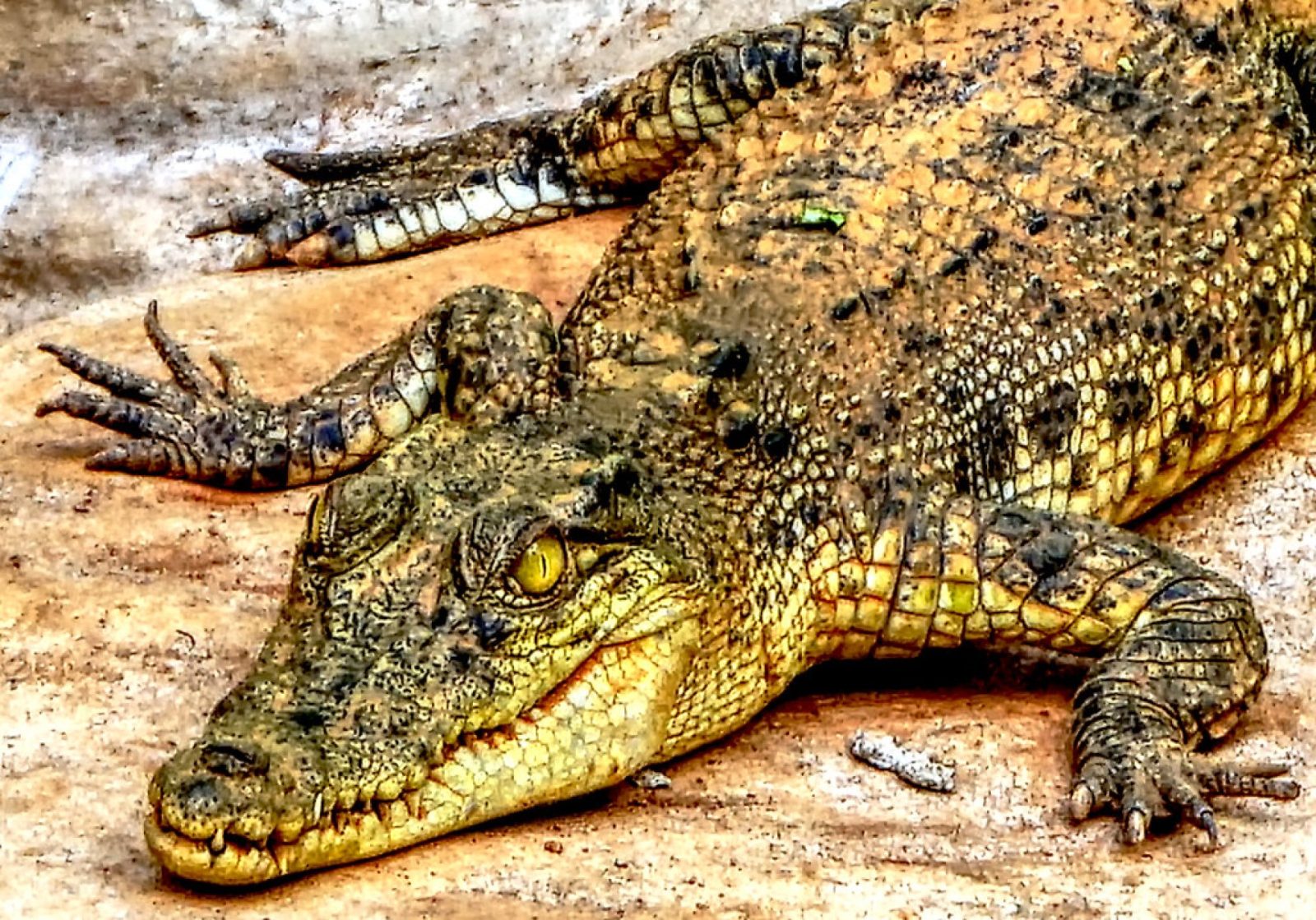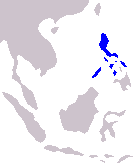
Philippine crocodile

Also known as the Mindoro crocodile, the Philippine freshwater crocodile and the Bukarot, it is the smaller crocodile found in these waters (the other being the saltwater crocodile. It also originated in Africa.
It is fairly small, reaching maturity at 1.5m and around 15kg. It rarely grows larger than 2.7m and 90kg.
The Philippine crocodile has been lost from Samar, Jolo, Negros, Masbate, and Busuanga.
Populations still survive in the Northern Sierra Madre Natural Park within the Luzon rainforest, San Mariano, Isabela, Dalupiri island in the Babuyan Islands, Abra (province) in Luzon and the Ligawasan Marsh, Lake Sebu in South Cotabato, Pulangi River in Bukidnon, Paghungawan Marsh in Siargao Island, and possibly in the Agusan Marsh Wildlife Sanctuary in Mindanao. Unfortunately, each of these populations are genetically isolated – so without regular translocation, the whole population may well lose genetic variability.
They are essential for balancing fish levels in different populations, as well as improving nutrients in the water (through their waste).
There are thought to be just 100 individuals above hatchling age, so are understandably considered critically endangered. Given the large number of eggs each crocodile has, were more to survive to adulthood, this could change quickly – but this is only going to happen with large human intervention.
Part of the problem is that much of the society believe them to be maneaters, even though the remaining indigenous community respect them highly. As such, illegal killing appears to be the main reason for decline. Education programmes may well help. They have been protected since 2001 and there are hefty fines for killing one. They are heavily featured in stories from the islands, which means there is a great deal of attachment to them, hopefully conservation efforts can connect to this and help save the species.










